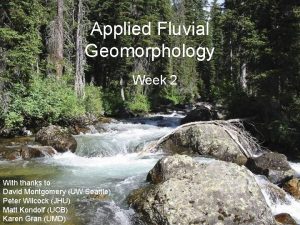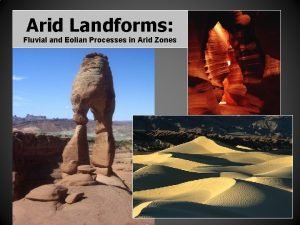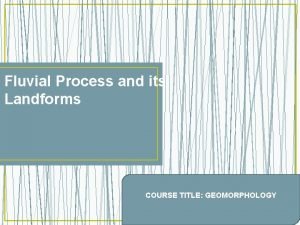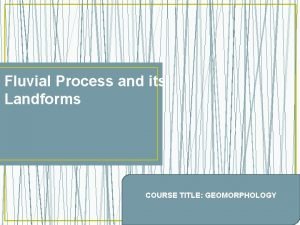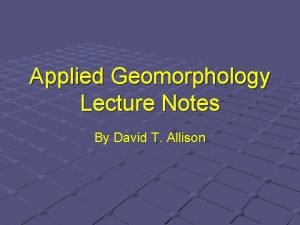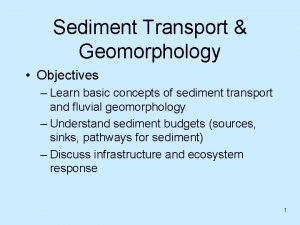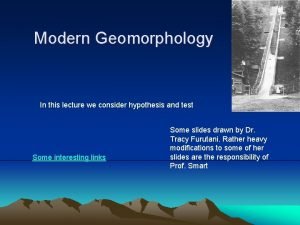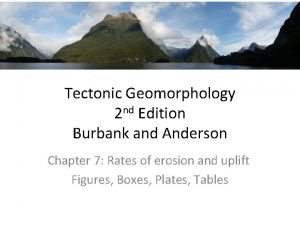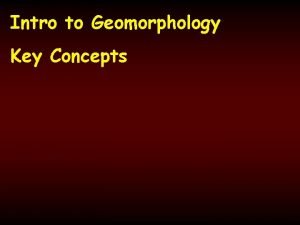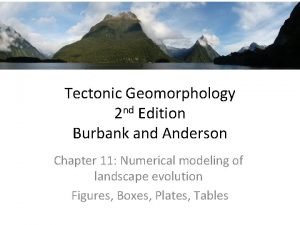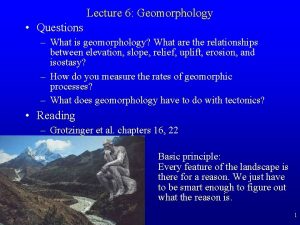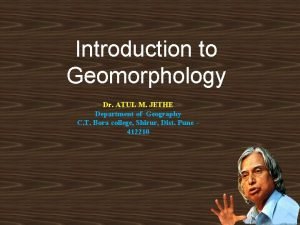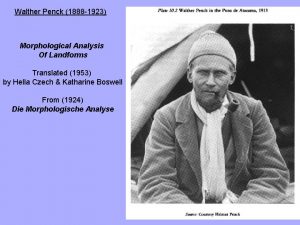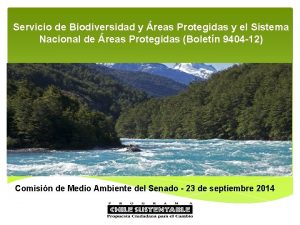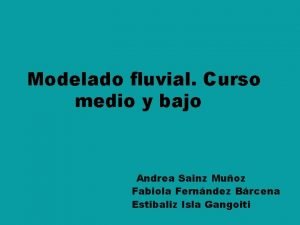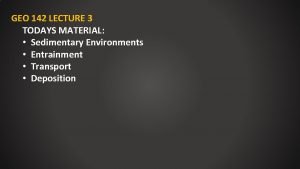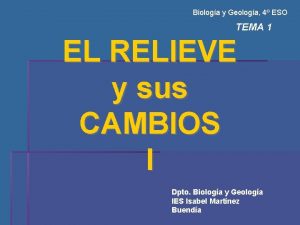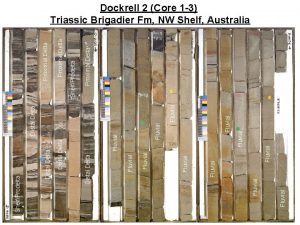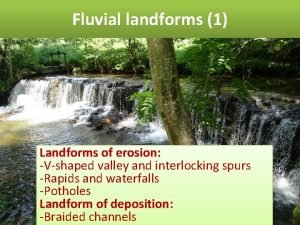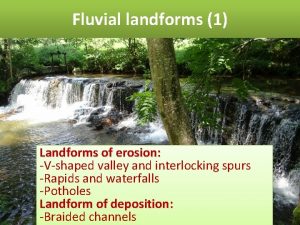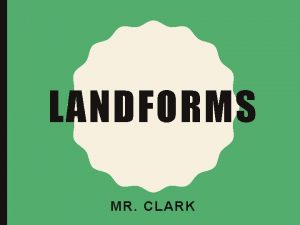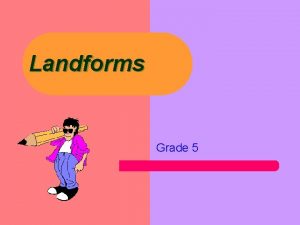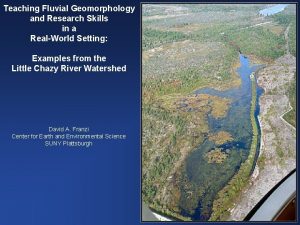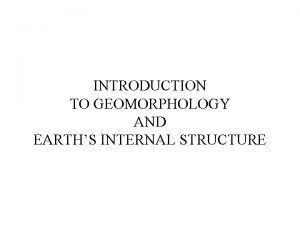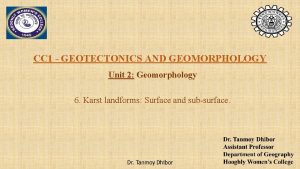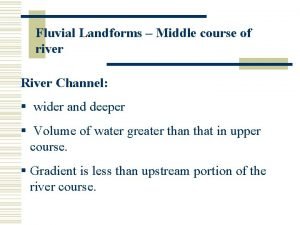Fluvial Process and its Landforms COURSE TITLE GEOMORPHOLOGY



















- Slides: 19

Fluvial Process and its Landforms COURSE TITLE: GEOMORPHOLOGY

Landforms of the Youthful Stage • All of the erosion by the river creates features or landforms on the landscape. Three features created in the youthful stage are, 1. V-shaped Valleys 2. Interlocking Spurs 3. Waterfalls

V-Shaped Valleys • V-shaped valleys get their name from their shape. The river erodes the landscape and creates a valley in the shape of a V. • This occurs because of Vertical Erosion. The river cuts down into the river bed, making it deeper. It creates a narrow deep valley. Mechanical weathering and mass movement create the V shape.

V-Shaped Valleys

Interlocking Spurs • As the rivers flows it meets areas of hard rock. It cannot erode these so it flows around them. • This creates a zigzag course.


Waterfalls • Waterfalls are formed when rivers flow over areas of hard and soft rock. • The river erodes the soft rock but cannot erode the hard rock. This creates a step which the water starts to fall over. • The falling water erodes deeper into the bed. The rivers load creates a Plunge



Waterfalls

Potholes: Potholes are formed by corrasion. Pebbles carried by the river are swirled around on the riverbed. This action erodes the rock on the riverbed forming potholes. Over time, they may widen and join with other potholes to form larger potholes, and the whole riverbed is deepened.

The Mature Stage • We now know that during the youthful stage the river is mainly eroding the landscape. • Erosion breaks off particles of rock and soil from the bed and banks of the river. They are carried along by the river and are known as the Load. • The load is carried from upland to lowland areas. This process is called River

River Transportation All rivers carry material in them. This material is carried by the river as it flows along. Rivers can carry large stones, small stones, sand, and other dissolved minerals. All of this material in the river is called the river’s

River Transportation • Transportation occurs in 4 ways. • • 1. Rolling 2. Bouncing 3. Suspension 4. Solution

River Transportation Suspension Solution Rolling Bouncing

Rolling • Rolling – The large stones are rolled along the bed of the river. Rolling

Bouncing – The smaller pebbles are bounced along the bed of the river. Bouncing

Suspension – Light material like sand silt are carried along (floating) in the water.

Solution 4. Solution – Dissolved materials are carried along by the river. Solution
 Applied fluvial geomorphology
Applied fluvial geomorphology Different types of dunes
Different types of dunes Course title and course number
Course title and course number Fluvial process
Fluvial process What is a fluvial process
What is a fluvial process Applied geomorphology notes
Applied geomorphology notes Objectives of geomorphology
Objectives of geomorphology Geomorphology hypothesis
Geomorphology hypothesis Tectonic
Tectonic Dynamic equilibrium in geomorphology
Dynamic equilibrium in geomorphology Tectonic
Tectonic Forces
Forces Application of geomorphology
Application of geomorphology Morphological analysis of landforms
Morphological analysis of landforms Maqueta de relieve chileno
Maqueta de relieve chileno Modelado fluvial
Modelado fluvial Modelado fluvial
Modelado fluvial Alluvial vs fluvial
Alluvial vs fluvial Vale fluvial
Vale fluvial Procesos fluviotorrenciales
Procesos fluviotorrenciales
